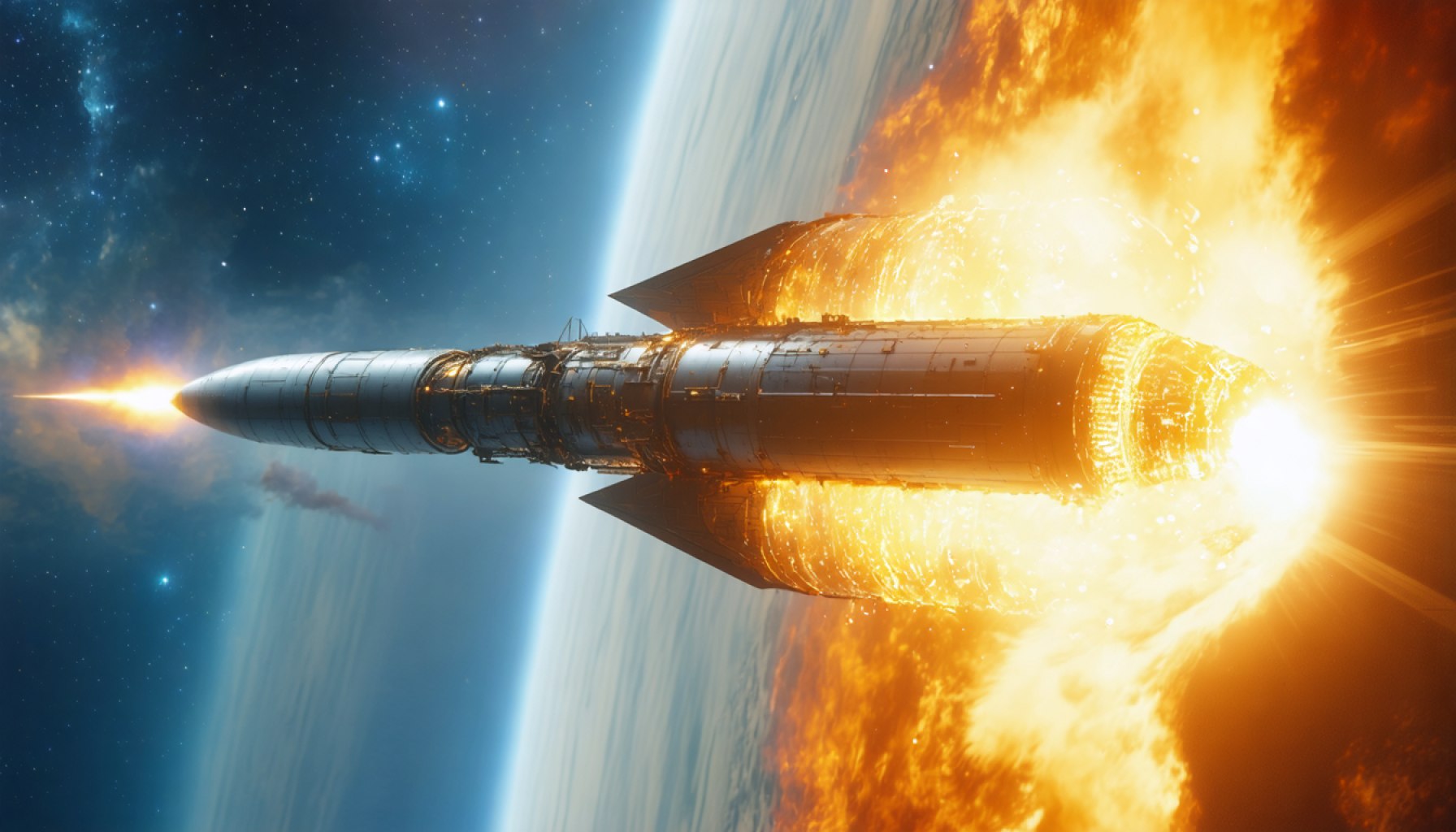- The Sunbird, developed by Pulsar Fusion, aims to revolutionize space travel using nuclear fusion propulsion, an advancement over traditional chemical rockets.
- Central to Sunbird is the Dual Direct Fusion Drive (DDFD), utilizing helium-3 and deuterium, offering more efficient and direct space propulsion.
- This technology could dramatically reduce travel times, cutting the journey to Pluto to four years and significantly shortening trips to Mars.
- Pulsar Fusion aims to demonstrate this technology by 2027, though engineering challenges remain before practical space application.
- The project reflects humanity’s ongoing quest for progress, potentially transforming interplanetary travel and furthering human expansion beyond Earth.
A new dawn of space exploration glimmers on the horizon with the emergence of an audacious project spearheaded by the British firm, Pulsar Fusion. Visualize a rocket, not fueled by chemical propellants but powered like the Sun itself—by nuclear fusion. This is the premise of the Sunbird, a pioneering concept that could potentially revolutionize space travel as we know it.
The Sunbird isn’t just a futuristic vision; it represents a quantum leap in propulsion technology. At its core lies the Dual Direct Fusion Drive (DDFD)—an innovative engine utilizing helium-3 and deuterium. This combination, when harnessed, releases charged particles for propulsion, bypassing the traditional conversion processes of existing fusion reactors. This development heralds a more efficient and direct method for propelling spacecraft across the vast expanse of space.
Imagine reducing the odyssey to Pluto from years to a mere four, or halving the voyage to Mars. The Sunbird promises these groundbreaking reductions in travel time, sparking imaginations about humanity’s future interplanetary endeavors. However, these aspirations remain largely theoretical for now, as fusion technology still dances on the fringe of practical space application.
Pulsar Fusion, under the leadership of Richard Dinan, acknowledges nature’s predilection for fusion. Unlike the challenging terrestrial environment, space provides conditions naturally apt for fusion reactions—mirroring the Sun’s profound energy production. Dinan notes this cosmic compatibility, envisioning a future where these rockets intercept spacecraft in orbit, launching them to distant worlds with unmatched speed and cost-efficiency.
Set against a backdrop of starry potential, Pulsar Fusion targets 2027 as a pivotal year to demonstrate fusion in space. Yet, hurdles remain—ahead lies a maze of engineering challenges to bring Sunbird from ambitious paper plans to the operational brilliance of space fleets.
While the immediate tasks loom large, if mastered, the Sunbird could become a cornerstone in expanding human presence beyond Earth, where the South Pole of the Moon becomes a bustling hub, and Mars transitions from a distant dream to a feasible destination for humankind.
The key takeaway? In the intricate dance between innovation and ambition, the Sunbird symbolizes humanity’s relentless pursuit of progress, where nuclear fusion might one day turn the pages of science fiction into an everyday reality. The cosmos beckons, and with projects like Sunbird, we inch ever closer to answering its call.
How Nuclear Fusion Could Revolutionize Space Travel
Exploring the Future of Space Propulsion
Pulsar Fusion’s groundbreaking vision to transform space travel through the Sunbird project raises compelling questions about the future of space exploration. Below, we delve into facets that the source material only hinted at, providing a 360-degree view on the implications of this technology for space exploration and beyond.
Real-World Use Cases and Market Impact
1. Reduced Travel Time in Space: Using the Dual Direct Fusion Drive (DDFD) technology, the Sunbird aims to drastically reduce interplanetary travel time. For instance, a journey to Pluto, which currently takes about 9 years with chemical rockets, could potentially take just 4 years. This could accelerate timelines for scientific missions, tourism, and even colonization, overturning logistical and financial constraints.
2. Economic Viability: While initially costly, the scalability of fusion technology could over time lower long-term space travel expenses. The transition from chemical propellants to fusion would significantly cut down on fuel costs, given the efficiency and abundance of helium-3 and deuterium.
Engineering Challenges and Industry Trends
1. Technological Hurdles: The creation of stable and efficient fusion reactions in microgravity presents a formidable challenge. Researchers must overcome issues pertaining to magnetic confinement and heat dissipation before these systems can be deemed practically viable for space applications.
2. Trends in Space Exploration: The solar system exploration market, spearheaded by companies like SpaceX, Blue Origin, and national space agencies, is ripe for disruption by nuclear fusion technology, which promises faster, more sustainable travel.
Controversies and Limitations
1. Technical and Safety Concerns: Despite its potential, DDFD technology must prove it can safely and sustainably manage the high-energy conditions required for fusion without adverse effects—be it technical failures or radiation hazards.
2. Regulatory Barriers: Nuclear propulsion systems face stringent regulatory scrutiny due to potential risks. Securing international cooperation and regulatory approval will be essential for deploying such technologies.
Features, Specs, and Pricing of Fusion Technology
– Dual Direct Fusion Drive (DDFD): This innovative propulsion system harnesses fusion reactions involving deuterium and helium-3, producing directly usable charged particles for thrust without intermediate steps.
– Projected Costs: Initial projections suggest that despite significant upfront R&D investment, the long-term operational costs could undercut those associated with traditional chemical propulsion systems.
Actionable Recommendations
1. Invest in Research: For investors and governments, investing in fusion technology now could yield substantial returns as the technology matures.
2. Focus on International Collaboration: Nations and private entities should collaborate to share knowledge and resources, as the benefits of advanced propulsion systems extend globally.
3. Educational Initiatives: Encouraging more educational programs focused on nuclear physics and engineering could expand the talent pool needed to drive fusion technology forward.
Conclusion
The Sunbird project illuminates the possible advent of a new era in space travel where the cosmos becomes more accessible. As we stand on the brink of potentially revolutionary advancements, embracing and collaborating on these technologies could transform the science fiction realm into tangible reality.
For more on innovations in space technology, visit NASA and SpaceX.
